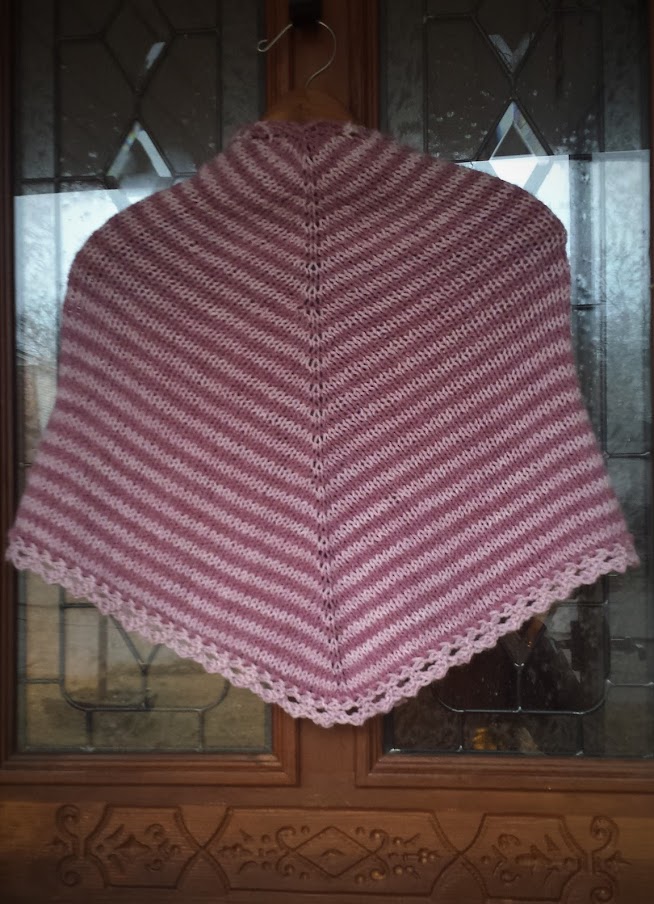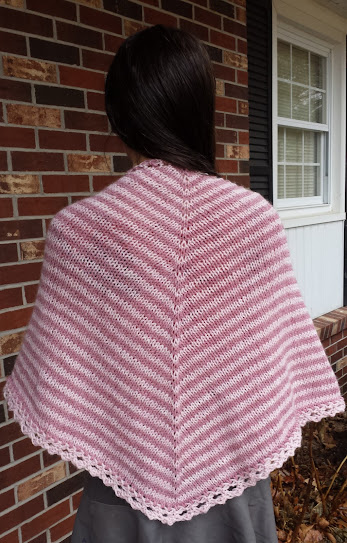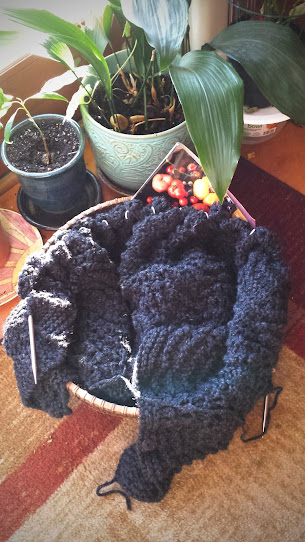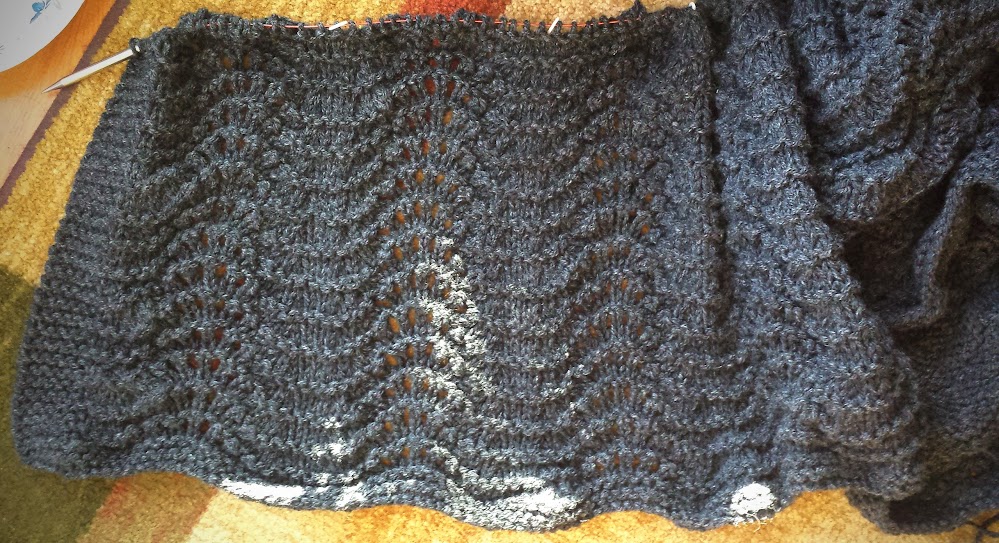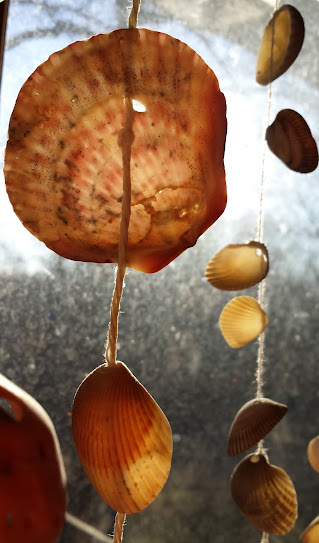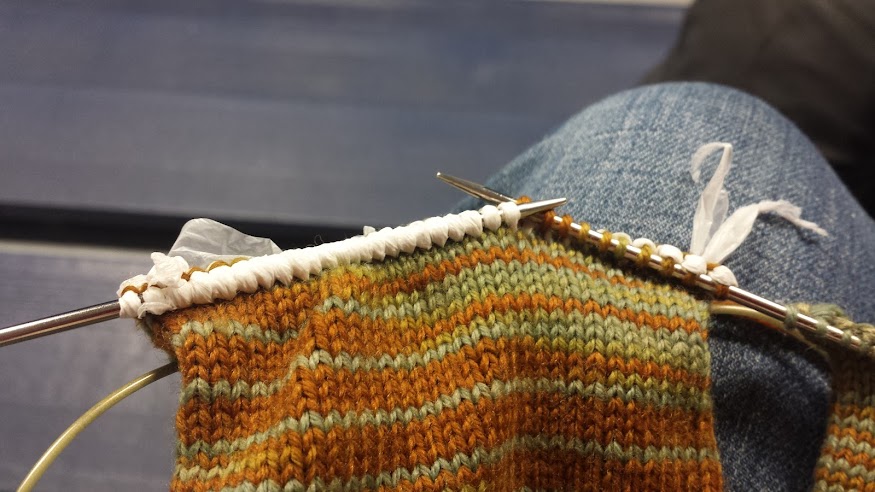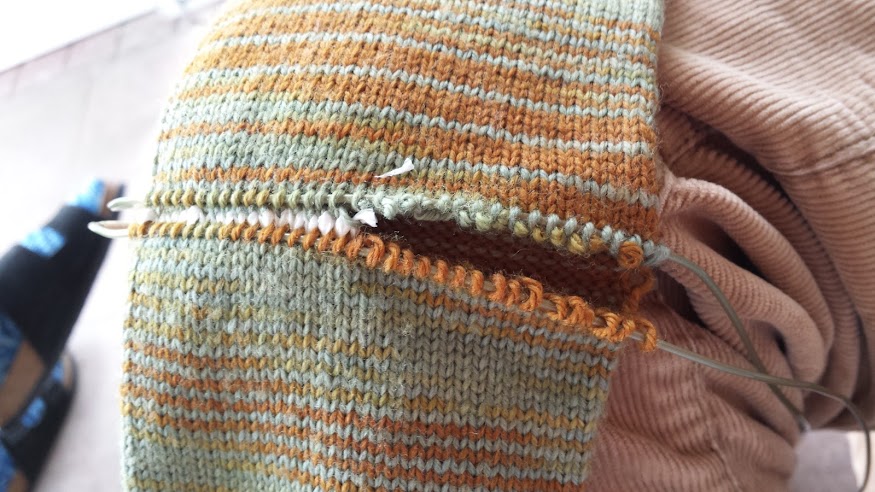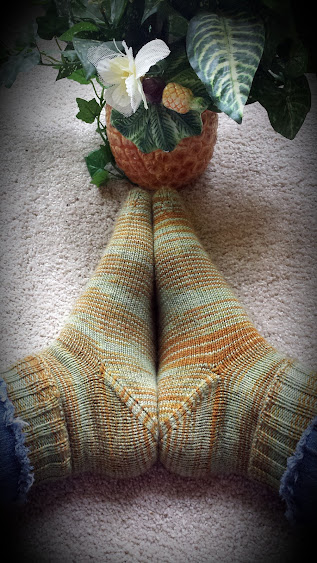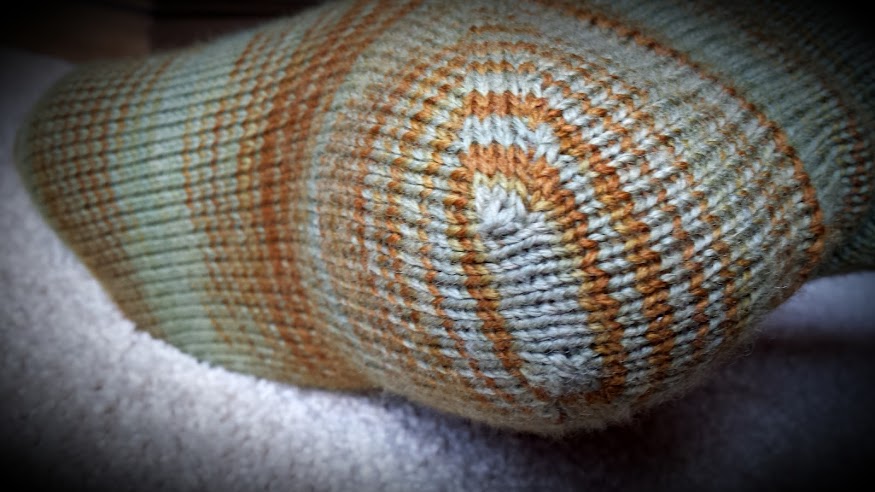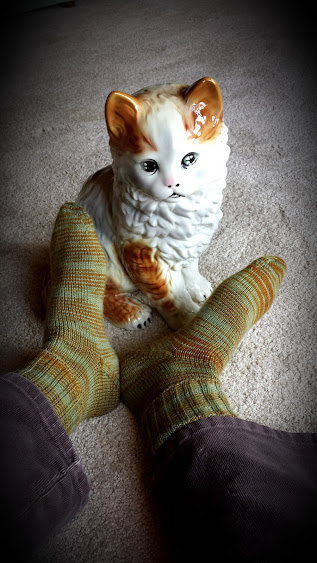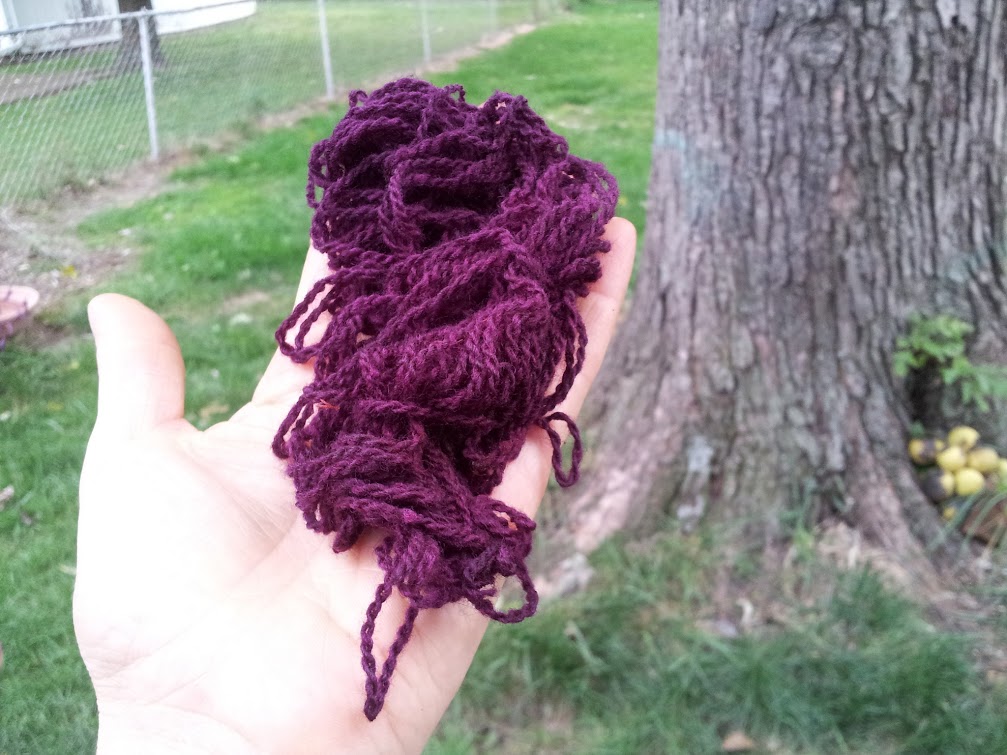The Natural Order of Chaos
I can’t remember exactly when I started collecting yarn for the beast. Around 2006, I think. Ten years ago. A friend loaned me her copy of Cheryl Oberle’s Folk Shawls after she knit a few gorgeous shawls from it. I thumbed through the book, drooling at the beautiful, complicated stitches and delicious+scrummy yarn. And I kept on thumbing through.
As a newish knitter, I chose patterns based solely on what I thought I was capable of doing, not on what truly called to me. I was afraid to take off my training wheels. And so I chose the one pattern that I thought I could actually do–the ruana: a large rectangle knit entirely of the simplest stitch a knitter can make with two hands. With the exception of the cleverly constructed neck (which was knit last, giving me time to build up to it), this is what we call a ‘mindless knit’. That is not said pejoratively. A mindless knit is a good thing–something that can be done without counting rows or stitches; something that can be picked up and put down without fear of jacking it up. In many ways, for many knitters, it is the perfect kind of knit–one that allows the stresses of the day to fall away in the rhythmic click-click of the needles, the pull and release of yarn across fingers. But in this moment, I was not thinking of those things. I was only thinking of what I could- and mostly of what I could not-do. Thus, this was a project born out of fear and denial: the unfortunate (and unnecessary) fear of crafting over my head, and the utter denial of my heart’s desire to do more. I was stubbornly unwilling to leave the bosom of my beloved garter stitch. And so I cast on (and cast on and cast on), and began a four year journey of… What? Fortitude, mostly. It’s a lot of garter stitch. 280 stitches per row. 472 rows. That’s 132,160 stitches just on the body. Add maybe another thousand or so for the neck. At times, it felt like a million more than that. It was the neverending story. But as far as stories go, it was a lovely one to listen to and to create. Warm, soft, lustrous, and colourful. It was these qualities that kept me coming back to the knitting. It was so enjoyable. I stopped seeing garter stitch as ‘basic’, and started to experience it for what it truly is–foundational. And the ruana, safe and constant, gave me space to think.
What? Fortitude, mostly. It’s a lot of garter stitch. 280 stitches per row. 472 rows. That’s 132,160 stitches just on the body. Add maybe another thousand or so for the neck. At times, it felt like a million more than that. It was the neverending story. But as far as stories go, it was a lovely one to listen to and to create. Warm, soft, lustrous, and colourful. It was these qualities that kept me coming back to the knitting. It was so enjoyable. I stopped seeing garter stitch as ‘basic’, and started to experience it for what it truly is–foundational. And the ruana, safe and constant, gave me space to think.
In this thinking, I figured out why I had actually chosen this project. Stitch by stitch, I began to examine my fear, which I realized was born out of belief in an identity of noncraftiness–which itself was all tangled up with life-long rejection from others for not being girlie enough. As I sat with that fear (and also that rejection), stitch by stitch, I realized that I was capable of doing this crafty thing that I loved in my own non-traditional, not-super-girlie way. And so as my hands knit the ruana, my mind tinked the old identity, the old judgement, until it could be reconstructed into something true. Some of this was very conscious. Some of this was very subconscious. But I knit and knit and knit through it. Somewhere in there, I started working on new projects. Complicated projects which required new skills. I leveled up a few times. But I came back to the ruana. To peace, and space, and the story she told.  And like the best stories, the ones that are unhurried, that take time to pause and call attention as they turn and unfold and build, the ruana demanded patience and rewarded with depth. Demanded reflection and rewarded with insight. She holds a story. Each stitch a word, each row a phrase flowing into the next; the wool providing both characters and setting, my hands the action. My own story knit into it whole cloth.
And like the best stories, the ones that are unhurried, that take time to pause and call attention as they turn and unfold and build, the ruana demanded patience and rewarded with depth. Demanded reflection and rewarded with insight. She holds a story. Each stitch a word, each row a phrase flowing into the next; the wool providing both characters and setting, my hands the action. My own story knit into it whole cloth.
Then she was finished. And I sewed shells and bells onto her fringe, so she can sing her story, too. One of the joys of this project was playing with so many different, glorious skeins of yarn. I loved choosing at random (which is never really random) and seeing how each colour blended into the next. Each skein had its own personality, and I’ll say this: you have to listen to your yarn. It will tell you who it wants to sit next to, if it wants to stand out or blend in.
One of the joys of this project was playing with so many different, glorious skeins of yarn. I loved choosing at random (which is never really random) and seeing how each colour blended into the next. Each skein had its own personality, and I’ll say this: you have to listen to your yarn. It will tell you who it wants to sit next to, if it wants to stand out or blend in.
I used eight different colours and slightly varying weights. I have them listed with pictures on my Ravelry project page. It is a near indescribable pleasure to work with fantastic yarn. I prefer stuff with character–natural colours, handspun, and natural fibers. And I don’t mind picking out the odd piece of straw here or there. The difference comes down to working with something alive or something dead. That’s what it feels like to me. Here’s what is in the ruana of truth:
- Beaveslide Dry Goods is an old favorite. Great yarn, super nice people. And the colour cards are awesome. I love them. I used Fisherman’s weight 3 ply in Bison Brown.
- Reynolds Lopi 100% Icelandic wool, all natural colours (grey-brown-black). This has been discontinued now. It’s a heavy yarn, and I split the plies to use the singles.
- Galler Peruvian Tweed in brown-black #107. Super ridiculously soft undyed superfine high Andes alpaca. Need I say more? Nope.
- Deborah Arbuckle’s Shadyside Farm Studio Hands-down my favorite yarn ever. Romney wool. Lustrous. Gorgeous natural colours. And she is super awesome. I used Sheep Heather in dark chocolate and black. Deborah’s Etsy shop is empty at the moment, and I hope she’s just taking a break to restock. This is me sitting here not freaking out.
- Brooks Farm Yarn I swear angelic light shone from this booth at Stitches Midwest. Their yarn is so soft and so shiny. Elegant, but still durable. Like an elf of Rivendell. I used two different colours from a line called Harmony–a blend of silk, wool, mohair, and magic. It has been discontinued, but it’s stashed on Ravelry with some for trade/sell. Hint, hint.
- Cheryl Oberle Dancing Colours. I met Cheryl Oberle at Stitches Midwest in Chicago and told her I was knitting her ruana pattern. She was absolutely lovely, and she picked out a skein from her Dancing Colors line to go in the ruana. How cool is that?! Super cool, that’s how cool. Highlight of the trip.
My non-knitting friends get a real kick out of my yarnie fangirling. Like the time we were sitting around the table at a dinner party, telling our best celebrity stories, and I regaled them with the time I waited on Casey and Jessica Forbes at a wedding brunch. You know? Casey and Jess… the founders of Ravelry. Oh, come on! Ravelry. The knitting website… Blank stares and then drinks shooting out of noses, people. That is the entertainment I bring to the table.
Not all knitting carries a story of chaos and transformation and changing of masks the way the ruana does. But it can. Everything has a story, and anything can be a catalyst for change if that is how you choose to see it. And that is magical. People always think that magic is supposed to change the outer world. It does. By changing you, by changing the inner world. May all your crafting be magical. 
As always, tinks on me!

